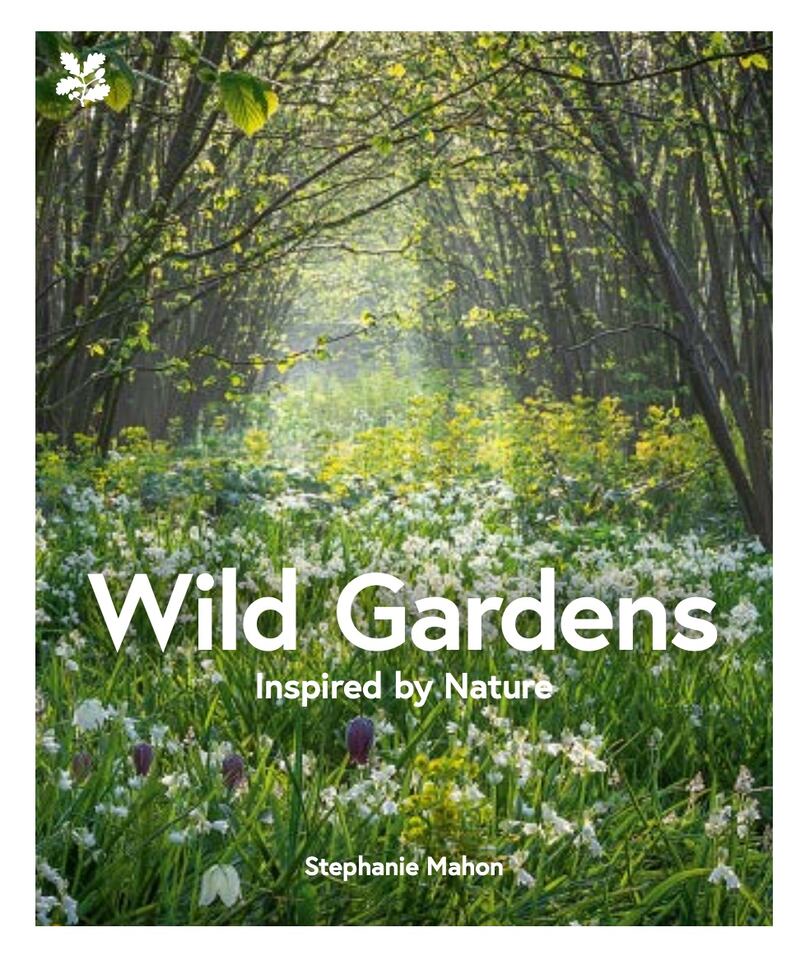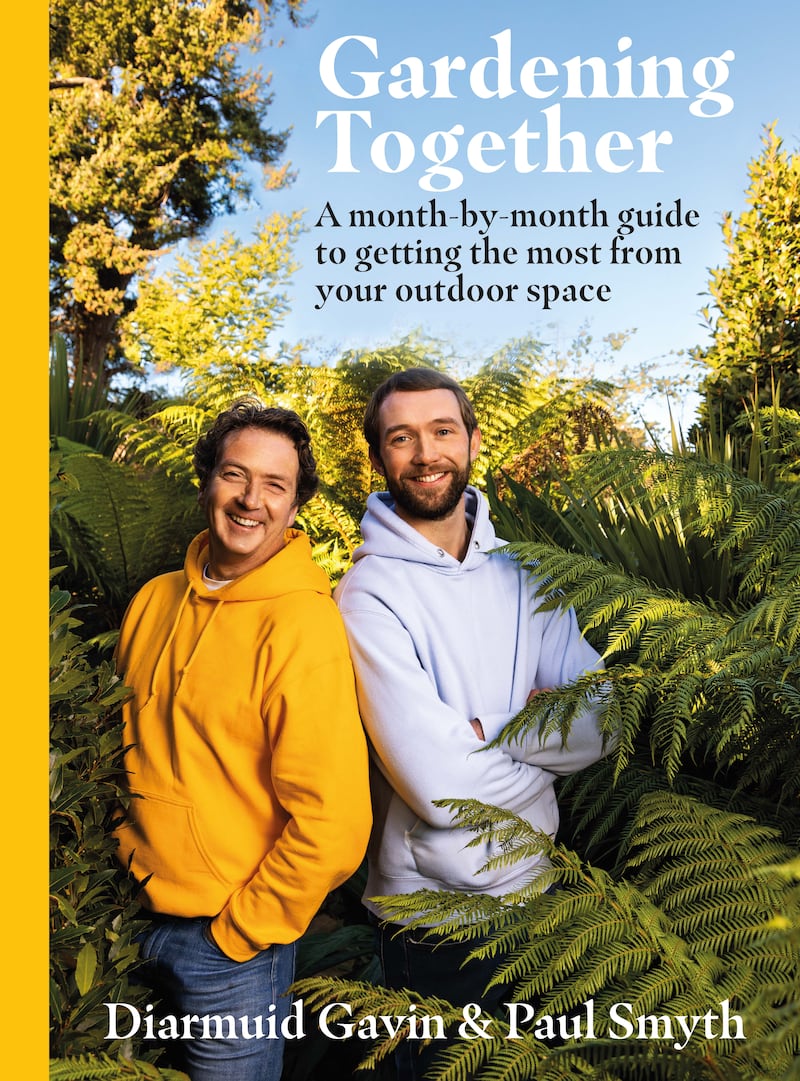From gardening for beginners, to planting for gorillas, exploring our wild side and letting nature have its say, three new books by Irish gardeners offer plenty of inspiring, informative and enjoyable reading material for the months ahead.
Gardening for Gorillas (Dublin Zoo, €35) by Stephen Butler, the Kew-trained former head-gardener and curator of horticulture at Dublin Zoo, is a fascinating record of the 37 years he spent transforming what was a botanically dull and uninspiring landscape into a series of beautifully planted spaces, expertly designed to suggest a geographically diverse range of wild habitats.
How do you conjure up an authentic sense of the gorilla rainforests of the Congo or the sun-seared savannahs of Africa in the heart of Dublin city? Or stop primates from pulling irises out of the zoo’s artificial lake? Which plants are lemur-resistant, or will appeal to sap-feeding marmosets while withstanding the attention of macaws? What sort of designed landscape is suitable for hippos? Red river hogs? Humboldt penguins?

All of the above might at first glance seem pertinent only to that minuscule percentage of the world’s population who design and maintain zoo gardens. But Butler’s engrossing book is a fascinating chronicle of something far beyond that. It is the story of gardening mistakes made and lessons learned, of a huge passion for the plant kingdom, of a lifetime’s worth of careful observation, meticulous research and exacting horticultural standards coupled with the recognition that nature should and will always have the final say, universal experiences that will ring true for so many seasoned gardeners.
READ MORE
Whether explaining the botanical difference between a thorn, a prickle and a spine — “a thorn is a modified stem, a spine is a modified leaf part, while a prickle is a modified hair’ — to describing the unfortunate effects that eating acacia leaves has on the digestive system of giraffes, Butler’s deep delight in a job that placed him right at the interface between the animal and plant kingdoms is infectious. As a result, Gardening for Gorillas is peppered with intriguing observations and nuggets of information that will delight the geekiest of plant lovers. There’s plenty of dry humour here too, as well as his obvious joy in bearing witness to the rich diversity and beauty of the natural world. All that aside, as a fastidious record of zoo ecology, zoo horticulture and the evolution of the modern zoo, this book is also the first in its field, making Butler something of a trailblazer for others to follow. (Available at Dublin Zoo as well as via its website. See gardeningforgorillas.com for a list of other distributors)
Wild gardens
As the new editor of the UK magazine Gardens Illustrated, the award-winning Irish garden-writer Stephanie Mahon is well known to many. Her latest book, Wild Gardens: Inspired by Nature, brings readers on a tour of some of Britain’s best-loved gardens including Sissinghurst Castle in Kent, the Beth Chatto gardens in Essex, Gravetye Manor in Sussex, Trengwainton in Cornwall, Lowther Castle in Cumbria, Wildside in Devon and Prospect Cottage in Dungeness. Roughly grouped into five categories, what these gardens share, as she explains in the preface, is that each in their own unique way embodies the idea of “wildness”, whether by artifice or by virtue of nature gradually gaining the upper hand.
From the orchid-studded wild flower meadows of Stowe and the artful gardens that Dan Pearson recently designed around the picturesque ruins of Lowther Castle, to the tree fern glades of Trengwainton in Cornwall, the exotic “jungle” of Glendurgan (also in Cornwall), and the “nature on steroids, visual suckerpunch” that is Bodnant, Mahon paints a vivid, immersive picture of these “wild” gardens and how they support a complex, biodiverse range of vulnerable habitats.

Several more wide-ranging, thought-provoking sections in her excellent book also take a closer look at the bigger picture. In one, Mahon explains the significance of native bluebell woods as a marker of centuries-old native, undisturbed woodland as well as the serious threats posed to them by building and infrastructure developments, human footfall and climate change. In others she debates the complicated legacy of the world’s planthunters, the role of traditional orchards and traditional wild flower meadows as havens for wildlife, the history of modern naturalistic planting and the New Perennial Movement, and the importance of forest schools and “wild play” areas for children’s wellbeing as well as the role of nature therapy in supporting our mental health.
In the final chapter, Mahon provides an excellent, concise “wild guide” to making the smallest garden more wildlife friendly. This includes practical pointers on everything from permeable paving and dry stone walls to flowering hedges, pollinator-friendly planting, ponds and compost making as well as general tips on how to “make the transition from neat and tidy gardener in charge of all you survey, to wildlife-enabling cohabitee”. Gardening for wildlife, she concludes, means choosing ethics over aesthetics and accepting imperfections such as holey leaves, but the reward is a garden brimming with life. Amen to that. Never preachy in tone, thoughtfully and elegantly written, and beautifully illustrated, this is a great read. (National Trust, £14.99)
Gardening newbies
The Irish garden designer, TV presenter, podcaster and author Diarmuid Gavin is well known to many, but perhaps less so is his comrade-in-arms and co-author, the Carlow-born horticulturist and plantsperson Paul Smyth. Together, they’ve written Gardening Together: A Month-by-month Guide to Getting the Most from Your Outdoor Space, which is inspired by their regular Instagram Live conversations during the pandemic lockdowns. Handsomely laid-out, generously illustrated, friendly and chatty in style and filled with oodles of short, snappy tips and reassuring advice on getting the most out of your plot, this is a great introductory book for the less-experienced gardener.

Potentially confusing horticultural terms and techniques such as “companion planting”, “ground cover”, “no-dig”, the “Chelsea chop” and “bulb lasagne” are clearly and concisely explained. The month-by-month format includes plenty of hands-on, practical advice on a range of seasonal jobs from seed-saving and propagation to planting bare-root trees or creating a wild flower meadow. But seasoned gardeners will also find plenty of interest among its pages, from the book’s “plant of the mont” suggestions, to the closer looks at certain plant groups from exotics such as aeoniums, cannas and banana plants to spring-flowering shrubs (Gill Books, €19.99).
This Week in the Garden
Garden centres are full of tempting pots of beautiful summer-flowering perennials at the moment, many of them in full bloom. But buying large numbers of any particular variety to plant in generous drifts in the garden can be very expensive. Instead, a great alternative is to buy a few strong healthy plants of a favourite variety and then propagate these by taking cuttings of them. Taken at this time of year, herbaceous cuttings will root very quickly, making it a really cost-effective way to get lots of new plants for free. For detailed instructions, see my column from May 21st.
Some tall varieties of vegetables and flowering plants with brittle stems need to be carefully staked or supported at this time of year to prevent them being badly damaged by strong winds or heavy rain showers that could topple them. Examples include cordon-type tomatoes, peas, dahlias and broad beans. Use strong sticks or bamboos and garden twine or netting to do this, making sure to cover the tips of canes with some sort of protective cover (recycled bottle corks or purpose-made cane toppers) to prevent accidental eye injuries.
Maincrop potatoes need to be earthed up every two to three weeks to encourage a good crop and prevent the developing tubers from greening-up as a result of being exposed to sunlight. To do this, use a garden spade or rake to gently pull the surrounding soil up around the stems, making sure not to disturb the plants’ delicate root systems.
Check out Microscopic Miracles by the marine scientist, gardener and illustrator Jennifer Delaney, an innovative Irish colouring book that uses art and science to explore viruses, fungi, plankton, seeds, pollen and plenty more (Gill Books, €12.99).
Dates for your diary:
Today; Saturday, June 25th; Tullynally Castle Plant Fair, Tullynally, Co Westmeath; see tullynallycastle.ie.
Tomorrow; Sunday, June 26th; Triermore Stud, Fordstown (near Athboy), Navan, Co Meath; Open Garden day in aid of the Red Cross Ukraine Appeal; admission €8; contact admin@triermorestud.ie for details.
Next Saturday and Sunday; July 2nd and 3rd; Claregalway Castle Garden Festival, Claregalway, Co Galway; with specialist plant sales, guest speakers and free garden advice with the Garden & Landscape Designers Association; see galwaygardenfestival.com.















